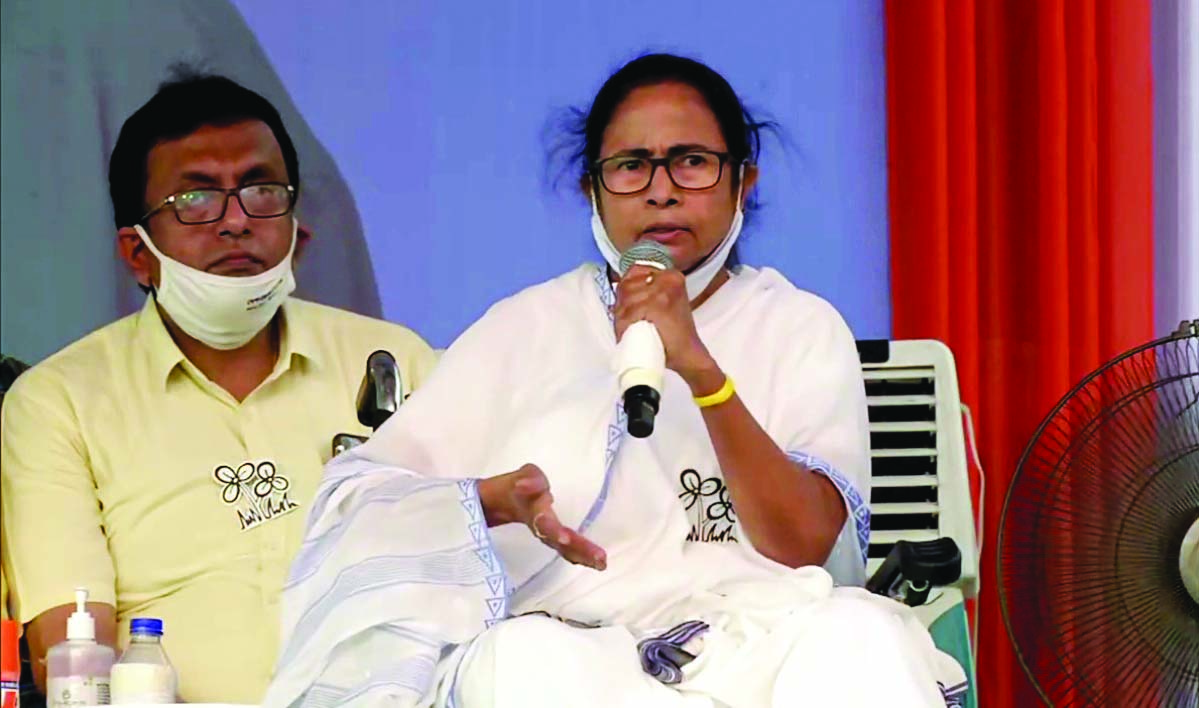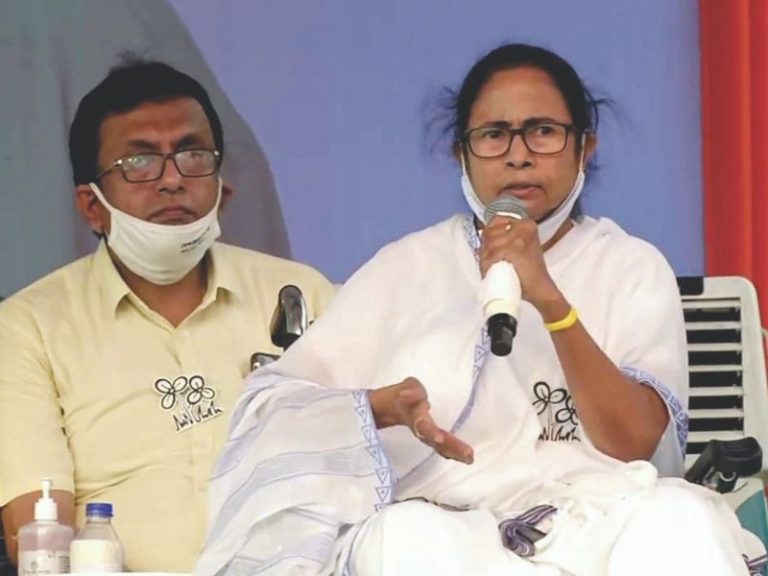Winning education card
Baishali Mukherjee (Kolkata)
In sharp contrast to BJP leaders including prime minister Narendra Modi and Union home minister Amit Shah who stormed West Bengal with over two dozen visits to preach messages of hindutva and dangers posed by illegal Muslim immigrants from neighbouring Bangladesh, incumbent chief minister and leader of the ruling Trinamool Congress party (TMC) Mamata Banerjee, campaigning for an unprecedented third consecutive term in office, gave high importance to education reforms and upgradation in her election rallies.
TMC’s communal harmony and socio-economic development strategy paid off handsomely. On May 5, Banerjee was sworn in as chief minister of West Bengal (pop.91 million) for the third time after TMC swept the legislative assembly election winning 213 of 294 seats, two more than in 2016. The high riding BJP which was confident of winning over 200 seats was restricted to 77.

Banerjee: unprecedented third term
While postmortems of political pundits and analysts indicate that the TMC government’s welfare schemes, ‘Bengali sub-nationalism’ and minority votes consolidation, played a major role in this historic win, they concede that Banerjee’s education reform initiatives were also a significant factor behind the party’s landslide victory.
Unlike BJP and northern politicians who seldom bother to include reform of the country’s languishing school and higher education systems in their rabble-rousing election campaign speeches, Banerjee’s education reform agenda evidently struck a resonant chord with West Bengal’s electorate, particularly the bhadralok (refined middle class). Unsurprisingly, following the very first meeting of the new Cabinet on May 10, she announced her government’s intent to establish English-medium government schools in all 341 administrative blocks of West Bengal.
Political pundits interpret this as an astute anti-BJP strategy to project Banerjee as a national leader and BJP as a ‘Hindi, Hindu and hindutva’ party. Despite several Supreme Court judgements and fierce opposition from the southern states, the BJP’s National Education Policy (NEP) 2020 proposes primary education solely in the Hindi medium or mother tongue.
It is pertinent to note that West Bengal has witnessed fierce debate over medium of instruction in primary years since the CPM (Communist Party of India-Marxist)-led Left Front government that ruled (and ruined) the state for 34 years (1977-2011) uninterruptedly, banned teaching of English in all government schools. The rationale of this ban was to reduce the rate of school dropouts in rural areas, which experts in the party ascribed to aversion of English.
That decision, however, proved counter-productive in the course of time as widespread English language deficiency led to two generations of students driving down higher education standards and millions of Bengal’s youth failing competitive national examinations. With the Left Front government also de-industrialising Bengal through aggressive trade unionism, youth from English medium private schools fled the state in millions in search of employment in other states.
To her credit, Banerjee started course correcting the state’s disastrous language policy from the start of her second term as chief minister. In 2018, the TMC government promulgated a two-medium policy in select government schools, with students given the option to enroll in English-medium classes. The next year in the run-up to the assembly elections of 2021, she promised to promote 100 government English-medium schools and the first of them with 160 students was inaugurated in February 2019 in Kolkata.
Quite clearly, the state’s electorate and influential middle class in particular, are dismayed that West Bengal’s education system, arguably the best in India until the beginning and end of prolonged Communist rule a decade ago, has been reduced to pathetic condition. Within the state’s dwindling intelligentsia, there’s an emerging consensus that the higher education system thoroughly infiltrated by underqualified CPM fellow travellers needs urgent upgradation to produce well-qualified school teachers and faculty for higher ed institutions.
“It might be wise, therefore, to supplement this ground-level task with the shoring up of every higher education institute in the state. The minister for education does not need telling, certainly, that however depleted West Bengal may seem in terms of its former glory, enough survives that could still be put to use. World-class academics, scholars, researchers and teachers still populate the higher echelons of education in the city — all that is needed is an unbiased, non-partisan, and wholehearted commitment from the government for them to function to their full potential,” wrote Rosinka Chaudhuri, director and professor at Centre for Studies in Social Sciences, Kolkata, in The Telegraph (May 26).
It is often said that what Bengal thinks today, India thinks tomorrow. By reiterating education reform and rejuvenation — a subject hardly mentioned by most politicians — Banerjee may well have awoken other political parties to its importance, and in the process improved her credentials as a progressive, nationally acceptable leader.
Also Read:
















Add comment